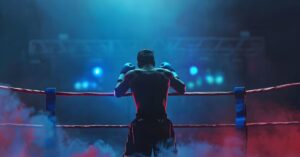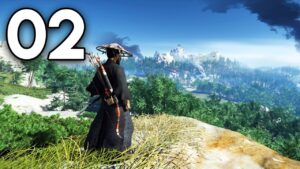When Is the Best Time to Use Flashata?
Flashata is a powerful tool in the world of photography and technology. But like any tool, it’s most effective when used at the right time. If you’re wondering when the best time is to use Flashata, you’re in the right place. In this article, we’ll explore what Flashata is, why timing matters, and when you should reach for it. Whether you’re a budding photographer or just curious about technology, this guide will help you understand how to use Flashata like a pro.
What Is Flashata?
Before we dive into the best times to use Flashata, let’s get a clear picture of what it actually is. Flashata is a state-of-the-art tool designed to enhance your photos and tech projects. Imagine it as a magic wand for your camera or device. When used correctly, Flashata can make your images pop and your tech tasks smoother.
Flashata isn’t just any ordinary tool; it’s equipped with advanced features that help you get the best results. From improving lighting in your photos to speeding up your tech processes, it’s versatile and powerful. Understanding its capabilities is the first step to knowing when and how to use it effectively.
Why Timing Matters
Timing is crucial when using Flashata because it can significantly affect the outcome of your project. Using Flashata at the right moment can make your work stand out, while using it at the wrong time might lead to less impressive results. Here’s why timing is so important:
- Lighting Conditions: In photography, lighting can make or break a photo. Using Flashata when the lighting is perfect can enhance your image, but using it when it’s already well-lit might make your photo look unnatural.
- Tech Efficiency: For tech projects, using Flashata at the right time can boost performance. If you apply it when your system is running smoothly, you’ll see better results than if you try to fix issues after they’ve already started.
Understanding when to use Flashata means paying attention to these factors and knowing how they affect your end results. Now, let’s break down the best times to use Flashata in different situations.
When to Use Flashata in Photography
Low-Light Situations
One of the most common scenarios where Flashata shines is in low-light situations. If you’re taking photos in a dimly lit room or at night, Flashata can help brighten up your shots. Imagine trying to take a photo of a birthday cake in a dark room. Without Flashata, the cake might look too dark to see. With Flashata, the cake will be well-lit, and everyone will look great.
When using Flashata in low-light conditions, make sure you’re not too close to your subject. Being too close can create harsh shadows or cause reflections. Adjust the distance and intensity of Flashata to get the best results.
Outdoor Photography with Harsh Sunlight
Outdoor photography can be tricky when the sun is too bright. Harsh sunlight can create strong shadows and make it hard to capture details. This is where Flashata comes in handy. It helps balance the light by filling in the shadows and making the photo look more even.
Think about taking a photo of someone standing outside on a sunny day. Without Flashata, their face might be in shadow while the background is too bright. With Flashata, you can fill in those shadows and get a balanced shot.
Portrait Photography
When taking portraits, you want your subject to look their best. Flashata can help achieve this by providing even lighting. If you’re taking a close-up photo of someone, using Flashata can highlight their features and reduce any unwanted shadows on their face.
Just remember to use Flashata in a way that complements natural light. Overusing it can make your photos look unnatural. Find the right balance to keep your portraits looking professional and appealing.
When to Use Flashata in Technology Projects
During System Maintenance
In technology projects, timing Flashata right can make a big difference. If you’re performing system maintenance or upgrades, using Flashata at the right moment can enhance performance and ensure smooth operation.
For example, if you’re upgrading software or optimizing a system, applying Flashata before you start can help improve efficiency. It’s like cleaning up a workspace before you begin a new project. A clean and well-prepared system will work better and faster.
For Data Processing Tasks
When working with large amounts of data, timing Flashata correctly can speed up processing times. If you apply Flashata during peak processing times, you might see improvements in speed and performance. It’s like adding a turbo boost to your computer’s performance.
Keep an eye on when your system is handling data-intensive tasks. Applying Flashata at these times can help you get the most out of your tech resources and complete your projects more efficiently.
To Troubleshoot Technical Issues
If you’re facing technical issues or glitches, using Flashata at the right time can help you troubleshoot and resolve problems more effectively. Applying Flashata during system checks or diagnostics can highlight issues and make them easier to address.
For example, if your software isn’t running as smoothly as it should, applying Flashata can help identify any underlying issues. It’s like using a magnifying glass to find hidden problems. Once you spot the issues, you can take steps to fix them and get everything running smoothly again.
Tips for Using Flashata Effectively
Adjust Settings for the Best Results
Whether you’re using Flashata for photography or technology projects, adjusting settings is key to getting the best results. For photography, this means tweaking the intensity and angle of the flash to match your lighting conditions. For tech projects, it involves setting up Flashata to align with your system’s needs and tasks.
Experiment with different settings to find what works best for your specific situation. Don’t be afraid to make adjustments and see how they affect your results. Practice will help you get more comfortable with using Flashata effectively. For more How to Utilize leomorg for Maximum Benefit
Avoid Overuse
Using Flashata too much can lead to less desirable outcomes. In photography, overusing Flashata can make your photos look artificial or overexposed. In tech projects, excessive use can lead to system slowdowns or inefficiencies.
Find a balance that works for you and your project. Use Flashata as needed, but be mindful not to overdo it. Less can sometimes be more, and finding the right amount of Flashata use can make a big difference in your results.
Keep Learning and Experimenting
The best way to get better at using Flashata is to keep learning and experimenting. Try different techniques, explore new features, and see how Flashata works in various situations. The more you practice, the more skilled you’ll become at using it effectively.
Stay updated with new advancements and tips related to Flashata. Technology and techniques can change, so staying informed will help you make the most of this powerful tool.
Conclusion
In summary, Flashata is a versatile tool that can greatly enhance both your photography and technology projects. Knowing when to use it is key to getting the best results. Whether you’re dealing with low-light conditions, harsh sunlight, or technical issues, timing your use of Flashata correctly can make a big difference.
By understanding the right moments to use Flashata, adjusting settings, and avoiding overuse, you can maximize its effectiveness. Keep experimenting and learning to become a pro at using Flashata. With the right approach, you’ll be able to make your photos look stunning and your tech projects run smoothly. Happy shooting and tech-ing!
Share this content:














Post Comment